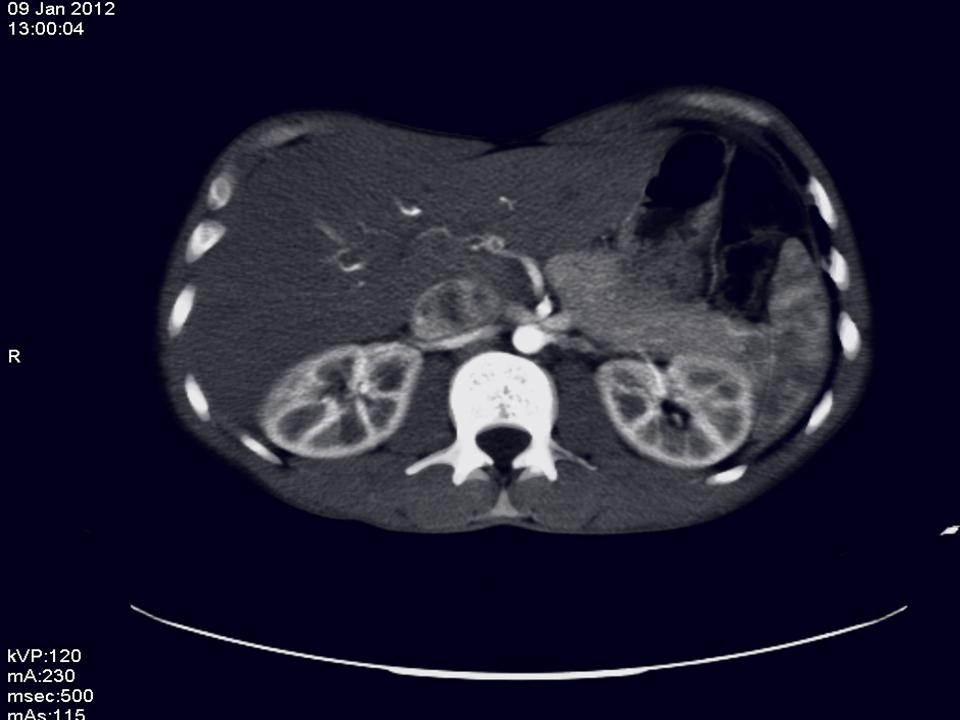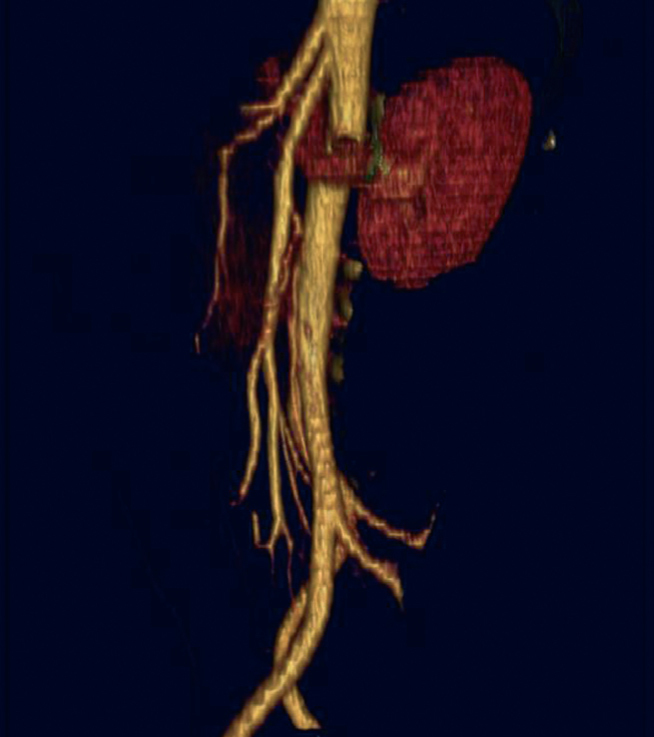To the Editor,
Among the different diagnostic algorithms that are commonly used in outpatient nephrology consultations, nutcracker syndrome/phenomenon is a very rare cause of haematuria. This type of haematuria originating from the left collecting system and is secondary to compression of the left renal vein between the superior mesenteric artery and the aorta.
We herein report the case of a 22-year-old male with no personal or family history of relevance, who was referred to a nephrological department for haematuria. Laboratory analyses confirmed the presence of haematuria that ranged between gross (macroscopic) haematuria and microhaematuria, depending on the measurement. This condition arose both with and without physical exercise. During periods in which urine samples came up clear, microhaematuria was always present. Also, haematuria was not correlated with respiratory tract infections at any level. The patient did not have oedema, abdominal pain, or any other symptoms.
A physical examination revealed the following: weight: 65kg; height: 1.80m; body mass index: 20kg/m2; blood pressure: 110/60mm Hg; all other measurements were normal. A laboratory analysis revealed the following values: C-reactive protein: 0.9mg/dl; proteinuria: 1g/24 hours; urinary sediment >30 000 red blood cells per field, with no casts or dysmorphic blood cells. The patient also had normal renal ultrasound images. An axial computed tomography angiography (CTA) (Figure 1 and Figure 2) was used to evaluate renal vascularisation, and led us to the diagnosis.
DISCUSSION
Nutcracker syndrome consists of haematuria originating from the left collecting system secondary to compression of the left renal vein, between the superior mesenteric artery and the aorta and is due to a reduced angle between these two arteries. This compression translates into increased pressure on the left renal vein system, which causes varicosities in the renal pelvis and ureter, which can in turn communicate with the urinary tract and cause haematuria. The predisposing factors include: nephroptosis, lumbar hyperlordosis, and reduced peri-renal fat (which was present in our patient). Clinically, this condition can be silent or involve episodes of macroscopic or microscopic haematuria, which can be accompanied by pain in the left renal fossa and/or abdominal pain. The haematuria is usually more intense during orthostasis and exercise, which occurred in our patient. It can also be accompanied by mild proteinuria and can even be associated with other entities such as IgA glomerulonephritis, although there is no evidence that associates these two conditions.1-3
This disease is difficult to diagnose using routine methods. Initially, a haematuria analysis must be carried out in order to rule out other, more common causes. Cystoscopy will reveal unilateral emission of haematuric urine from the left ureter, in the case of macroscopic haematuria. A retrograde venography and angiography with renocaval pressure gradient (difference in pressure between the distal portion of the renal vein and the inferior vena cava) is accepted as the gold standard for establishing a definitive diagnosis of nutcracker syndrome; however, since these are invasive testing methods, there are other diagnostic alternatives, such as CTA scans and 3D reconstructions that also facilitate diagnosis. Depending on the severity of the bleeding, treatment varies between observation and monitoring and surgical techniques for correcting the anatomical anomaly, such as autologous transplantation and left renal vein transposition.4-5
In conclusion, given a young patient with haematuria, and negative diagnostic tests suggesting haematuria of a renal origin, we must keep in mind the possibility of this urological pathology.
Conflicts of interest
The authors affirm that they have no conflicts of interest related to the content of this article.
Figure 1. Computed tomography angiography of the abdomen
Figure 2. Computed tomography angiography of the abdomen









